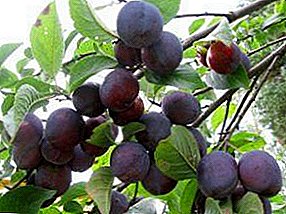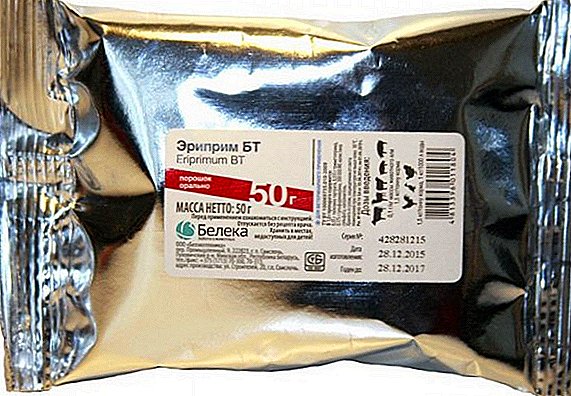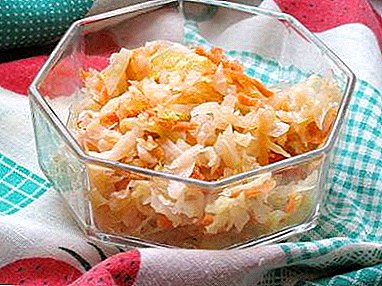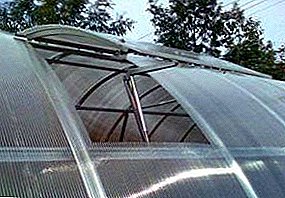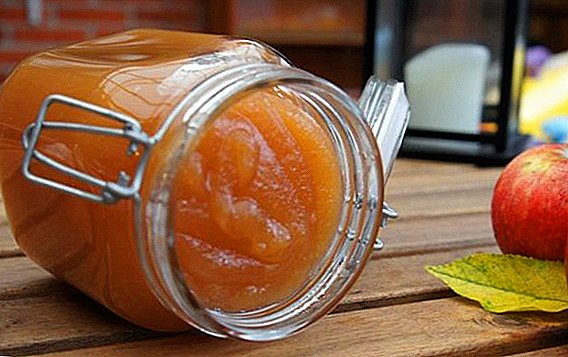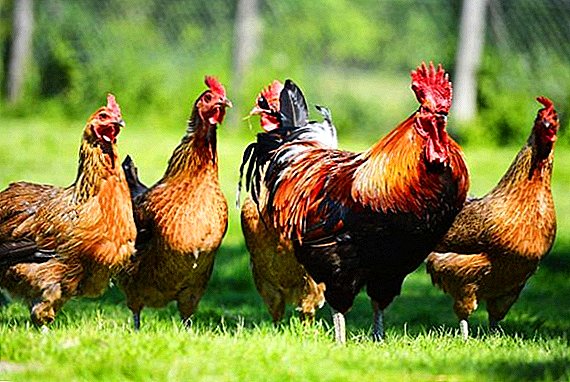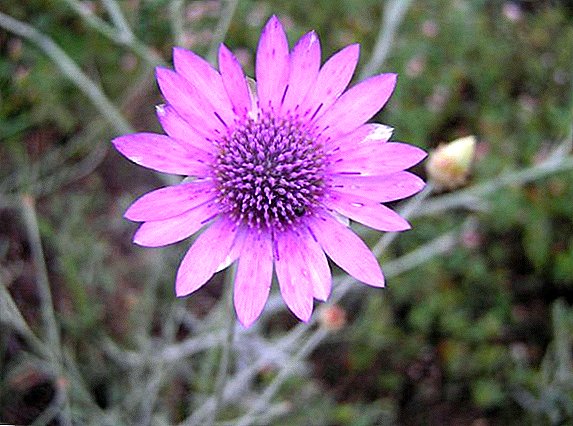 Simple to grow, amazingly beautiful and multifunctional plant - it's all about the culture of Spirey nipponskaya "Snowmaund". A low shrub, the peak of which blooms falls on June, harmoniously complements the green compositions in large and compact, industrial and urban areas. What is a plant, what are the features of planting and care, how can it be used in landscape design - about this later in the article.
Simple to grow, amazingly beautiful and multifunctional plant - it's all about the culture of Spirey nipponskaya "Snowmaund". A low shrub, the peak of which blooms falls on June, harmoniously complements the green compositions in large and compact, industrial and urban areas. What is a plant, what are the features of planting and care, how can it be used in landscape design - about this later in the article.
Description
Spiraea Nippon was originally from Japan, from the island of Sikoku, which is what the name of the plant variety says, and in Greek, the word "spirea" means "bend" (spiraea).
Spirea nipponskaya is a medium-height shrub (from 1.5 to 2.5 m), which reaches a peak height by 10-20 years. In width, the plant also extends to 1.5-2.5 m, usually the bush is more spreading than width. It has long, horizontal, arcuate-shaped branches with oval leaves, 1-4 cm in length, placed alternately.
Familiarize yourself with the peculiarities of growing Japanese spirea, white spirea, Bumald spirea, willow spirea, birch spirea, Wangutta spirea.
 The leaves at the base of a dark green shade, closer to the jagged border, become bluish-green. In late autumn, the foliage becomes red. The life span of a bush varies from 30 to 50 years. Every year the plant grows up and in breadth by 15-30 cm.
The leaves at the base of a dark green shade, closer to the jagged border, become bluish-green. In late autumn, the foliage becomes red. The life span of a bush varies from 30 to 50 years. Every year the plant grows up and in breadth by 15-30 cm.
During flowering, the branches of a bush are densely covered with snow-white corymbose inflorescences with small flowers: up to 0.8 cm in diameter. Themselves globular inflorescences, large (up to 7-8 cm). Shrub blooms in early June, during flowering looks very impressive, both close and from far distances. The flowering period - 15-25 days.
Did you know? Spiraea Nipponskaya - an excellent pollinator for many cultures, is a source of nectar and pollen for bees and other types of pollinating insects. The shrub is included in the growing list of plants by specialists from the Royal Horticultural Society (The Royal Horticultural Society).

Landing
For planting shrubs suitable as well-lit areas, and the territory in partial shade. Best of all, the plant will feel in the bright sun, in a moist, well-drained soil. However, due to its excellent adaptation and resistance to urban conditions, spirea can be planted in poor, clay, dry soils with a wide range of acidity. To prepare the soil it is necessary to mix the soil, peat and sand in a proportion of 2: 1: 1. It is necessary to ensure drainage: you can use expanded clay or broken brick with a layer of 15-20 cm. The width of the pit should be half the root system, depth - 0.5 m, the walls of the recess must be made strictly vertical. The recess must be dug 2-4 days before planting.  A drainage layer is laid on the bottom and a layer of earth, the roots are lowered and straightened on the bottom of the pit, sprinkled with the remaining soil, and slightly tamped. After the bush, it is necessary to water 10-20 liters of water, mulch with peat 5-10 cm thick. In the first years of life, the shrub must be carefully and abundantly watered so that the root system is well formed and strengthened.
A drainage layer is laid on the bottom and a layer of earth, the roots are lowered and straightened on the bottom of the pit, sprinkled with the remaining soil, and slightly tamped. After the bush, it is necessary to water 10-20 liters of water, mulch with peat 5-10 cm thick. In the first years of life, the shrub must be carefully and abundantly watered so that the root system is well formed and strengthened.
Important! The root system of spirea over time grows and occupies a fairly large area. When designing a site design, this fact must be taken into account.The best period for planting shrubs - overcast or rainy autumn time. However, the shrub can be planted in the spring, the main thing to remember: summer blooming varieties are suitable for planting in the spring, and in the fall you can plant both late-flowering and spring-flowering species.
 Grade Nippon spirea "Snowmound" preferably planted in the spring, before the foliage begins to bloom. When buying seedlings you need to choose those that have not dried out the root system, strong and flexible branches with an abundance of buds. The overgrown roots can be cut a little, and if they are too dry or damaged, the branches should be shortened, the seedling itself should be lowered into a container of water for a short time.
Grade Nippon spirea "Snowmound" preferably planted in the spring, before the foliage begins to bloom. When buying seedlings you need to choose those that have not dried out the root system, strong and flexible branches with an abundance of buds. The overgrown roots can be cut a little, and if they are too dry or damaged, the branches should be shortened, the seedling itself should be lowered into a container of water for a short time.The plant gets along well with such crops: juniper, thuja, spruce.
Breeding
There are several common ways of breeding all types of spirea:
- Seeds.
- Layering.
- The division of the plant.
- Cuttings.
You can prepare the cuttings in a few simple steps:
- select one-year healthy branches;
- divide the shoot into several parts, cut off each piece of the lower leaves;
- prepare containers with sand, plant cuttings at an angle of 40 °, wrap with foil;
- plants must be kept in the penumbra, moistened with a spray bottle several times a day;
- with the onset of the first frosts, cuttings can be prikopat and wrap with foil, leaves;
- spring cuttings can be planted in the ground at a permanent place.


Care
If the plant was planted in good soil in compliance with all the recommendations and rules, it remains only to properly care for the bush, so that every June from year to year it will delight us with a riotous snow-white bloom. The main components of a competent care are watering, fertilization, pruning after flowering and preparing shrubs for wintering.
Did you know? The plant did not always have a decorative value. The flexible, durable branches of the spirea were used for the manufacture of whip handles in ancient times. This is reported in the dictionary V.I. Dahl.
Watering
 The plant has a developed, spreading, but shallow root system, therefore it needs regular watering: 2 times a month using 10 liters of water per plant. During the dry period, the amount of water can be increased to 15 liters. After watering the ground, be sure to loosen the soil and remove the weeds. Peat, sawdust, foliage, or seed husks can be used for mulching in order to avoid the formation of an earth crust and hold moisture in the soil for a longer time.
The plant has a developed, spreading, but shallow root system, therefore it needs regular watering: 2 times a month using 10 liters of water per plant. During the dry period, the amount of water can be increased to 15 liters. After watering the ground, be sure to loosen the soil and remove the weeds. Peat, sawdust, foliage, or seed husks can be used for mulching in order to avoid the formation of an earth crust and hold moisture in the soil for a longer time.
Especially important is watering in the first year of planting - thanks to regular moisture, a strong, full-fledged root system is formed. 
Top dressing
The shrub can be fertilized twice a year - in the summer you can use organic matter, the rest of the time they use complex mineral fertilizers. Early in the spring, you need to make a mixture containing trace elements, phosphorus, potassium and nitrogen ("Kemira-lux", "Kemira-universal"). In the summer, you can apply mullein in the form of a solution. For better effect, you can add superphosphate (20 g per 20 l of the mixture).
Pruning
To enhance the flowering of the bush, as well as to avoid excessive growth of the branches, it is necessary to systematically prune the shoots. Since Spirea nippon inflorescences are located along the entire length of the shoot, it is necessary to cut only the tips of the branches or cut the branch to half.  Dried, frozen branches should be cut off after the snow melts (in March-April). And in the fall you need to remove old, weak, overgrown shoots.
Dried, frozen branches should be cut off after the snow melts (in March-April). And in the fall you need to remove old, weak, overgrown shoots.
Every two years it is necessary to remove poor-flowering branches. Once in 7-10 years it is necessary to carry out a rejuvenating pruning - all branches whose age exceeds 7 years are completely removed.
It is also important to prepare the plant for the winter. To do this, you can wrap the stem part closer to the root with a layer of foliage or peat up to 20 cm thick. This procedure is especially important for young plants in frosty, snow-free winters.
Important! In especially frosty winters, young one- and two-year-old shoots may suffer. To protect them from frostbite, it is necessary to pin the branches to the ground, cover them with foliage and foil.
Diseases and pests
In general, Nippon spiraea is highly resistant to diseases and pests. However, sometimes a plant can be attacked by insects or infections. How to deal with the most characteristic ailments:
- Spider mite Particularly often affects plants in hot, dry summer. The main signs of damage are white spots on the foliage. Then the leaves turn yellow, dry and fall. To destroy the pest, shrubs are treated with such drugs: Fozalon, Fosfamid, Metafos, Keltan, Akreks.
- Aphid. It can attack the plant throughout the summer, damages foliage, young shoots, inflorescences. If the area affected is small, you can use folk remedies (pepper tincture, a solution of laundry soap, tincture of tobacco, onions and garlic). If a significant part of the plant is affected, these drugs will help: Actellic, Fozalon, Pirimor.
- A gutter of a blue sorcerous dust spear. Eats buds, foliage, young shoots. To destroy the pest used drug "Decis" in the form of an aqueous solution.


Application in landscape design
Spirea Nipponskaya has a very wide application in gardening of various territories, perfectly complements the areas with coniferous plants, organically looks near water. The shrub can be used in different quality for landscaping the following areas:
- front gardens and flower beds near residential courtyards;
- children's, sports grounds;
- institutions gardens;
- park area;
- hedge;
- in the preparation of marginal plantations;
- for single landings on lawns.
During the flowering period, the shrub looks lush and elegant, perfectly visible from a distance. Spirea organically complements tree-shrub compositions, creating a bright accent. Widely used in the preparation of rock gardens and complex flower gardens, planted along garden paths, fences.  It is harmoniously combined with other types of sprayer, lilac, bulbous flowers. Outside the flowering period, the thin, long, curved branches of the shrub give grace to the whole composition. Due to its unpretentiousness, frost resistance and ease of care, the plant is widely used in landscape design and landscaping. This is a beautiful honey plant - Nippon spiraeus is also planted near the apiary and single hives.
It is harmoniously combined with other types of sprayer, lilac, bulbous flowers. Outside the flowering period, the thin, long, curved branches of the shrub give grace to the whole composition. Due to its unpretentiousness, frost resistance and ease of care, the plant is widely used in landscape design and landscaping. This is a beautiful honey plant - Nippon spiraeus is also planted near the apiary and single hives.


